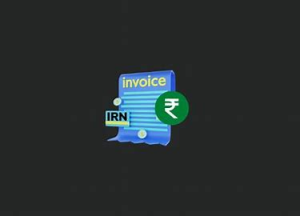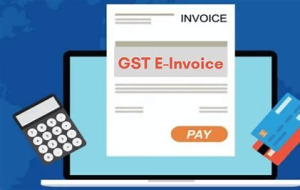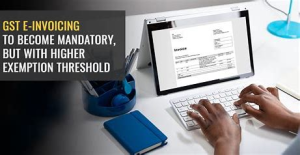Staying compliant with frequently changing regulations can be challenging for businesses. Yet, we strive to do things by the book, knowing well that it protects our best interests in the long run.
E-invoicing compliance is one such regulation that has gained significant momentum over the past few years. The aim is to enhance transparency in business-to-business (B2B) transactions and improve tax oversight by authorities. The government has systematically expanded its ambit by reducing the aggregate turnover threshold requiring mandatory e-invoice generation.
With the latest phase starting in August 2023, even smaller businesses with turnover exceeding Rs 5 crore now come under the compliance radar.
As a prudent businessperson, your mind may be flooded with questions: How do I determine if my turnover breaches the threshold? How often should I track transactions? What if my billing software is not e-invoice-ready? What documents should I maintain? Understanding the practical challenges you may face, this guide strives to provide reliable solutions.
Let us begin this journey together to make your business both GST law-compliant and operationally efficient!
Checking transactions against the e-invoice threshold

The first step is checking if your net aggregate supplies across financial years have exceeded the Rs 5 crore mark based on GST returns. This is crucial to determining mandatory e-invoice generation for B2B transactions starting on August 1, 2023.
Which transactions count?
As per Section 2(6) of the CGST Act, 2017, the aggregate turnover used for computing the e-invoice threshold includes:
- Value of taxable outward supplies
- Value of exempt outward supplies
- Value of export goods and services
- Value of interstate supplies
Components of Aggregate Turnover
| Transaction Type | Description |
| Taxable Supplies | All types of B2B/B2C supplies with GST at 5%, 12%, 18%, etc. |
| Exempt Supplies | Goods and services treated as exempt under GST, with no tax. |
| Exports | Export of goods or services with or without IGST. |
| Inter-State | Any supplies between different states in India. |
Hence, the total value of such transactions needs to be checked across financial years and consolidated under the same PAN.
How to compute aggregate turnover
The aggregate turnover calculation methodology would include:
- Identifying all registered GSTINs under your PAN
- Extracting annual turnover details from GST returns for each GSTIN
- Summing up turnover amounts from detail tables like GSTR-1, GSTR-3B, or GSTR-9
- Checking if the cumulative figure has exceeded Rs 5 crore in any financial year post-2017-18
Certain key aspects of computing include:
- Calculate turnover on the basis of the financial year—the sum of all GST returns filed.
- Exclude any taxes from the aggregate total.
- Include credit and debit notes and amendments for revised turnovers.
- Use turnover amounts as declared in returns, sans any audited financial statements.
- Maintain adequate documentation (returns, computations, etc.).
Therefore, self-compute cumulative supplies from your GST filings and returns to accurately verify e-invoice threshold exceedance.
Verification of transactions above the e-invoicing limit
Once the cumulative turnover amount is derived from GST returns, the next step involves validation against varying e-invoice requirements.
Over the last 3 years, the government has progressively reduced aggregate turnover limits for e-invoicing compliance in a phased manner; initially, it was mandated only for businesses over Rs 500 crores as of October 2020.
The current phase covers those above Rs 5 crore in turnover as of August 2023. Hence, besides just current limits, turnover needs to be verified across past years as per the below table:
E-Invoicing Turnover Limits and Applicability Timelines
| Phase | Turnover Limit | Applicable From |
| I | 500 Crores | 1st October 2020 |
| II | 100 Crores | January 1, 2021 |
| III | 50 Crores | 1st April 2021 |
| IV | 20 Crores | 1st April 2022 |
| V | 10 Crores | 1st October 2022 |
| VI | 5 Crores | 1st August 2023 |
An example of how businesses should validate turnover for e-invoice applicability verification is:
- Annual Aggregate Turnover
- FY 2017-18: Rs 4.8 crore
- FY 2018-19: Rs 5.2 crore
- FY 2019-20: Rs 18 crore
- FY 2020–21: Rs 35 crore
- Analysis
- Breached 5 Cr threshold in FY 18-19 itself
- Therefore, applicable from August 1, 2023
Thus, careful year-wise validation coupled with available phase-wise limits helps accurately determine e-invoice applicability.
Want to know everything about the e-invoice threshold? Then click on this blog link by Captainbiz.
Also Read: What Is The Latest E-Invoice Turnover Limit?
Determining if transactions exceed the e-invoice threshold

For newly notified businesses closer to the Rs 5 crore turnover mark, continuously determining if aggregate supplies have exceeded the prescribed limit is vital. A slight surge in quarterly sales could suddenly warrant e-invoice generation.
Hence, proactive assessment methods and periodic checks become critical.
Monthly/Quarterly Assessment of Turnover
Simple ways for regular monitoring:
- Verify cumulative invoices raised every month and check quarterly totals.
- Extract details from the sales register or revenue ledger.
- Check GSTR-1 declarations against e-way bills generated for B2B supplies per month.
- For better clarity, rely on limited review by external consultants or CAs.
Building reasonable monthly thresholds, say 15-20% below Rs 5 crore, also helps. Alerts can be set up if such budget numbers seem to be breached.
Comparison against Previous-Year Turnover
Another reliable approach is tracking current-year turnover against previously filed GST returns:
- Maintain a summary sheet of financial year-wise GST returns (gross turnover declared).
- Monitor 2022–23 turnover against others and check for unusual % increases.
- A higher variance, say 30%, indicates a likelihood of crossing the threshold.
- Reasons can be analyzed before sales ramp up further.
Automated Workflow for Turnover Tracking
Technologically advanced organizations can create automated workflows and routines running periodic checks (say, weekly or fortnightly) to:
- Ingest the latest sales data feeds from ERP or accounting software.
- Compute turnover for the current period based on T+1/T+2 sales.
- Compare against pre-defined thresholds for alerts and notifications.
- Integrate with messaging apps like Slack for updates to key personnel.
Building such real-time monitoring proves highly efficient in promptly identifying e-invoicing applicability.
Monitoring transactions for e-invoicing compliance
Once aggregate turnover exceeds the defined Rs 5 crore limit, continuous monitoring of transactions liable for e-invoicing becomes important. Two key transaction types requiring compliance are:
1. B2B supplies
Once the Rs 5 crore aggregate turnover threshold is breached, applicable entities need to continuously monitor all B2B transactions to ensure e-invoicing compliance. This would cover intra-state or inter-state supplies, spanning goods and services, to other registered buyers.
However, B2C transactions with end consumers not having GST registration would be excluded. Appropriate checks in enterprise systems, like mandatory IRN fields, reporting classifications, validations against shipment, etc., can enable systemic tracking of relevant B2B transactions. Reconciling them with GSTR-1 for data accuracy becomes vital. Non-compliance, even for a small percentage of B2B invoices, poses compliance risks.
2. Exports
In addition to B2B supplies, all export transactions also warrant monitoring as part of the e-invoicing framework. Export transactions, both with and without integrated tax, would need reporting to IRP for IRN. Another aspect to cover is supplies made to SEZ units, irrespective of the nature of the underlying goods or services.
Hence, having clear visibility on the export invoice and SEZ supply trail through appropriate identifiers or flags enabled in the ERP or billing system aids continuous compliance. Integrating validation rules can also strengthen checks.
Relevant principles for monitoring include:
- Earmark transaction modes: separate reporting categories for B2B supplies and exports
- Enable a template or field for capturing IRNs against individual invoices.
- Set validation checks in the billing system to deny shipment or accounting entry for missing IRN.
- Review if the IRN capture percentage improves periodically, say monthly.
- Reconcile e-invoiced documents with those getting reflected in GSTR-1.
- Fix accountability for resolving errors and process gaps.
Therefore, unless systemic tracking mechanisms are implemented with greater visibility on e-invoicing-specific transactions, slippages are likely.
Assessing transaction amounts for the e-invoice threshold
For entities hovering near the Rs 5 crore turnover mark, strategically assessing transaction amounts and patterns becomes useful to predict applicability. Insights can be drawn from:
Studying Seasonal and Cyclical Trends
For businesses hovering around the Rs 4-5 crore turnover mark, it becomes vital to assess potential seasonal or cyclical spikes in transaction volumes during certain months. These could arise owing to festive buying, bulk procurement in crop harvesting seasons, or peak construction activity periods. Historical data on the quantum of such B2B transaction bulges during prior years can serve as a proxy to model a likely turnover breach during forthcoming seasons or intervals. Proactive mitigation steps for compliance can thus be initiated.
Analyzing customer and product categories
A granular assessment of top-performing customer categories or product segments driving revenues and transactions provides further indicators on turnover growth trends. Monitoring order flows and billings of a few big-ticket B2B clients placing routine bulk purchases coupled with heightened traction for certain goods can explain turnover expansion and predict possible e-invoice needs.
Judging the Impact of Business Expansions
Evaluating the transaction influence potential of tangible business expansions also aids in estimating turnover growth. Setting up large production capacities, widening the distribution footprint through new warehouses or dealers, and signing up major enterprise contracts—all tend to have a direct bearing on funneling additional B2B transactions. Approximating their scale and likely timeframe provides reasonable pointers to factor in while assessing turnover.
Such qualitative factors also allow a reasonable assessment of turnover growth triggers to envisage e-invoice needs.
Seeking External Industry Insights
Industry reports or trusted advisors can provide independent perspectives on expected sectoral growth and transaction trends to help make informed decisions.
Also Read: E-Invoice Threshold
Tools for confirming e-invoice threshold exceedance

While manual techniques help determine e-invoice applicability, integrating reliable solutions can significantly improve efficiency, transparency, and communication of e-invoicing needs.
Integrating Validation Checks in the Billing System
Embedding automated validation checks in billing systems helps streamline turnover monitoring against defined thresholds. Features like configuring limits for alerts on nearing turnover levels and dashboards depicting IRN generation analytics aid compliance. Upfront upgrades to integrate e-invoicing schema and APIs ensure preparedness for mandate kick-in based on turnover scans.
Key features to look for:
- Real-time turnover counter-tracking invoices generated
- Configurable thresholds for automatic alerts on turnover levels
- E-invoicing compatibility: ready schema, API integrations
- Dashboards depicting key metrics like IRN-generated
GST Compliance Software
Deploying comprehensive GST compliance software platforms like Clear Tax, which unify e-invoicing and e-way workflows, delivers additional advantages. Elements like centralized tracking of B2B vs. export transactions, automated reconciliation of sales, GSTR-1, and inbuilt secure archival substantiate compliance adherence.
Seeking expert assistance
Seeking trusted expert guidance from GST consultants or advisors helps validate turnover computation methodology and suggests corrections to plug data gaps. It also sets you up to readily address transitional challenges upon exceeding thresholds and drive systematic compliance.
Also Read: Latest GST And E-Invoicing Updates Simplified
Conclusion
Reliably self-assessing transactions against defined e-invoicing turnover thresholds is key to continuous compliance. As the government adds nearly 4 lakh registered entities under its ambit in its latest phase, understanding applicability, monitoring relevant transactions, and deploying the right tools become vital.
With back-to-basics verification approaches, operational checks through IT integration, and expert advice, entities hovering near the Rs 5 crore mark can accurately gauge compliance needs and proactively prepare.
Staying up-to-date on your turnover levels and any associated regulatory changes also goes a long way toward seamlessly embracing the expanding e-invoicing mandate.
FAQs
-
Which transaction amounts determine e-invoicing applicability?
Aggregate turnover, comprising taxable outward supplies, exempt supplies, exports, and interstate supplies, is considered to evaluate breaching the defined turnover threshold for e-invoicing in a financial year.
-
How frequently should turnover be checked for e-invoice compliance?
Monthly or quarterly assessments of turnover against thresholds offer reasonable frequency. Nearing limits, weekly or biweekly monitoring helps take timely action.
-
What key transactions require e-invoicing once the limit is exceeded?
All B2B outward supplies and export transactions mandatorily need e-invoicing upon exceeding the turnover threshold, as notified by CBIC.
-
How can ERP/billing software help with e-invoice compliance?
Key features like configurable turnover alerts, automated validations, and a built-in e-invoice schema/API assure systematic tracking against limits and seamless reporting.
-
What reconciliation is vital for e-invoicing compliance?
Matching e-invoiced B2B transactions captured in the sales module with those getting reflected in GSTR-1 is extremely useful to ensure accurate reporting.
